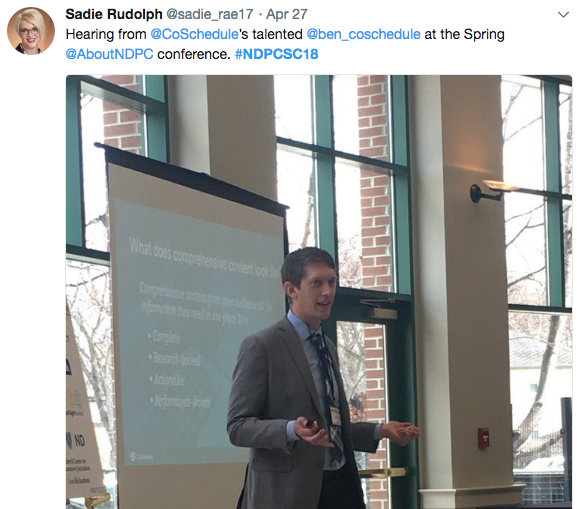Content marketing is all the rage in the marketing world lately. We create and create and create … and no one pays attention. What gives?
For Ben Sailer, blog editor at CoSchedule, it’s not about just creating great content. It’s about creating comprehensive content. ”Comprehensive content give your audience all the information they’re looking for in one place,” says Sailer.
But how do you do this? Enter the CRAP model (seriously, stick with us).
C – Complete
Comprehensive content has to be complete. It must include information and resources none of your competition can match. This may include videos, images or extra free resources. It also means taking a look at what is missing from the existing content on the web.
Sailer encourages use of the Skyscraper method. Look at the top 10 search results for a given keyword or topic you want to rank for. Then find a way to make it something 10 times better.
R – Research Backed
Comprehensive content does your audience’s work for them. It gives all the background and goes beyond Google to do the research. Further, it doesn’t rely on assumption, but is instead backed by data and insight.
A – Actionable
Comprehensive content allows you to show your audience how to do something, not just tell them. Actionable content could include an instructional video, a step-by-step guide, a link to additional content on your site or a downloadable user’s guide.
Further, think about how these action steps can help drive conversion. Tell your audience clearly what your product does and how it can help them to act. Give your audience all the information they need so they don’t have to leave to get the information somewhere else.
P – Performance Driven
Comprehensive content needs to be performance-driven.
- Scope out competitor’s content with a high number of social shares
- Use keyword search tools to gauge search interest (Keyword planner, Moz, etc.)
- Listen to customer and audience feedback
- Use Google Analytics to determine which content has performed well in the past
- Check Google auto-complete suggestions
- See if any related search suggestions appear for your perspective topic
By following this method, organizations can work to create comprehensive, long-term content that gives their clients and prospects everything they need to know. Further, Sailer encourages organizations to use this model beyond content marketing. Can you apply this to your website? Can people get everything they need when they need it from your website? If not, how do you create a more comprehensive experience?
Click here to see Ben's slide deck.
